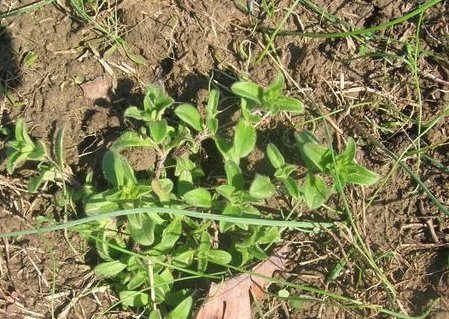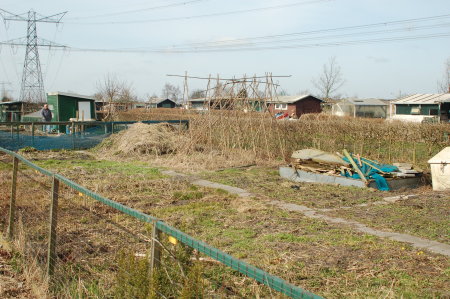Fertilizer is probably something all gardeners use, at least from time to time. It comes in many forms from chemical to animal manure, or perhaps homemade in the form of ‘tea’ made from compost, manure or green plants. There are also fertilizers claiming to be organic. Some are added to the ground, and others applied to the leaves of the plants (foliar feeding). Some are strong and others weak. Of course there are also the component parts; nitrogen, phosphorus and potassium (N,P and K), and fertilizers are given numerical ratings of these components like 10-20-10. It can all seem confusing and opaque, especially at the beginning.
In particular many people feel somehow that fertilizer is an important element of gardening, and since other people use it, they have to as well. An extension to this is the knowledge that organic gardeners don’t use chemical fertilizers, therefore you have to find an organic alternative like manure.
The Habit
This feeling like fertilizer is somehow an important part of gardening, can lead to a sort of addiction or dependence on fertilizer, that works something like this.
First you add fertilizer to your garden and you notice everything grows faster and looks greener and healthier. This is particularly true with fertilizer high in nitrogen, and it’s very easy to get the feeling that if some fertilizer makes the plants look so good, more must be better.
At this point you might give your plants so much they experience sudden death, but more likely you keep giving them small amounts over time, perhaps a little extra when you sense it’s needed. Since fertilizers usually contain more than one nutrient (NPK), probably over time the nutrients in your garden are getting more and more out of balance. Since this probably leads to your plants not growing well, it can easily make you think you need more fertilizer.
By the time you’ve added so much that you finally realize you are causing the problem and not solving it, you can be faced with a situation that’s very difficult to deal with.
As someone who has spent the past decade or so moving their garden around, and needing to borrow spots from other people, I can tell you it’s a very common problem in my area.
A related problem can be if your garden is former pasture land, or otherwise has a lot of recently applied animal manure.
When do you need fertilizer?
As a rule, for most people, a well managed and established garden does not need any fertilizer. It’s too complicated a topic to make such a broad statement, but this is the general rule.
It’s possible when you first start a garden you will have some problems, usually a shortage of organic material. In this case it’s likely you will have to do something about the existing problems, and this might involve using some fertilizer. Often fertilizer is not necessary, but sometimes it is.
If you are unable to practice good principles of crop rotation, you may need some fertilizer to compensate. It’s worth pointing out you’ll likely end up with a whole host of other problems too if you don’t practice proper rotations.
Potted plants often require fertilizer.
Unless you are sure you need fertilizer, it’s best not to use any at all. If you do need to use it, it’s best to use something weak like fish emulsion or homemade teas from green leaves or compost. Fresh animal manure should almost never be used in your garden, rather it should be composted first.
If you live somewhere soil tests are available, get an analysis of your ground before you add any fertilizer. This will give you an idea if anything is needed.
What can you do once the damage is done?
Besides hoping for rain, and just waiting for it all to wash away, one of the first things you should try to address in over-fertilized ground is nitrogen (N) levels. Too much nitrogen, and your plants will be stressed and the weeds will grow faster than anything else you may try to grow. Not enough, and your plants will be weak and small.
In my experience, the problem manifests itself like this. In a healthy garden nitrogen fixing plants are the primary source of nitrogen, and the ground will be rich in fixed nitrogen. Another much less important source of fixed nitrogen is compost. Fixed nitrogen remains in the ground, and tends to become available when as the plants need it. Any other source of nitrogen that gets added to the garden, whether from natural sources like manure or chemical fertilizer, will be soluble. Soluble nitrogen is available immediately, and can stress or kill plants. Soluble nitrogen can wash away, but it can also accumulate in large amounts in the ground. In the presence of soluble nitrogen, nitrogen fixing plants will fix less, so there will be less fixed nitrogen in the ground. In addition, if your ground is low in organic material, it may not have the capability to retain fixed nitrogen.
If your ground has too much soluble nitrogen, for example has a lot of animal manure added, try covering the garden with a high carbon mulch material like wood chips or straw. In extreme cases you may want to mix a small amount of this material into the ground, but this can cause other problems as well, so don’t do it unless you think it’s really needed. High carbon material will remove nitrogen from the ground.
If your garden is lacking nitrogen, consider a weak nitrogen fertilizer like fish/kelp emulsion, or homemade fertilizers like ‘teas’ in the short run, but nitrogen fixing plants are key to the long term. Consider planting one or more nitrogen fixing trees like Alders or Sea Buckthorn in temperate climates. For other climates you’ll have to research the issue and see what’s available. Growing nitrogen fixing crops like beans and peas is also a good solution, perhaps as companion plants. This is a situation that may take a few years to get stabilized, and if you’re using a chemical fertilizer now and intend to stop, you may want to cut back as a first step, for just this reason.
For other nutrient imbalances, I don’t have any good suggestions. If you are unsure of the state of your ground, adding compost is always a safe thing to do. If you can, let your ground lay fallow for a year or more before using it again as a garden.



